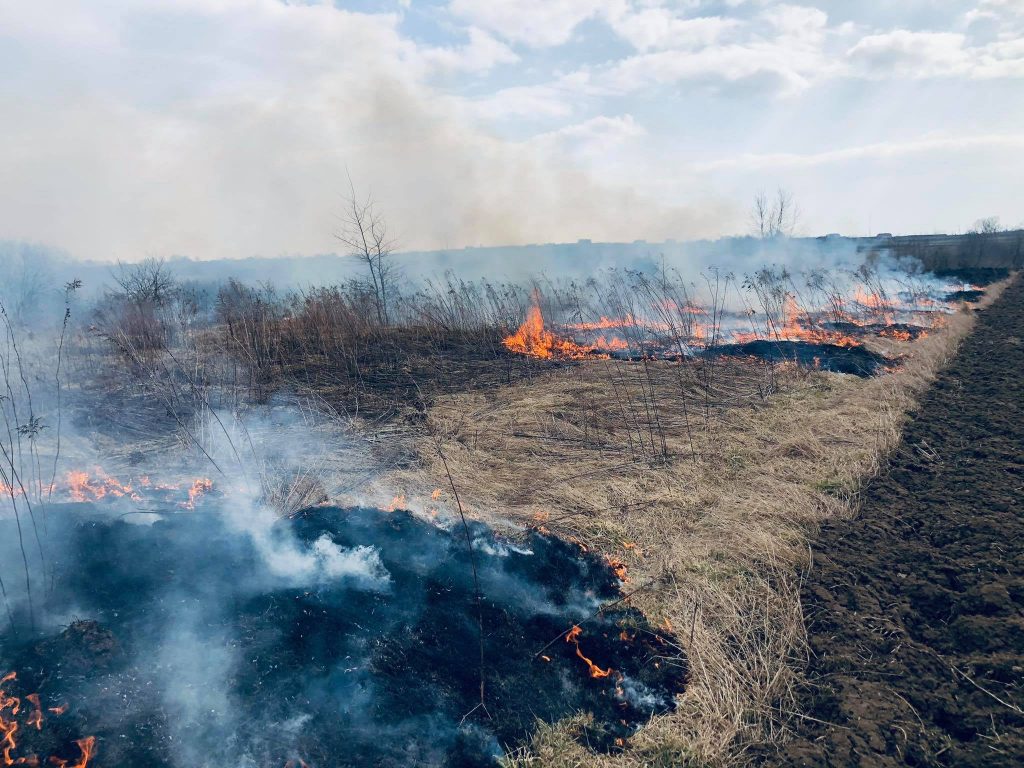When burning dry remains of vegetation, people often do not think about what consequences this can lead to. And the threats are considerable and they are not only related to soil pollution or the death of animals and birds that nest in the grass, but above all they have a harmful effect on the health and life of people.
The damage from burning leaves and dry grass is multifaceted and extremely dangerous. When one ton of plant residues is burned, about 9 kg of microparticles of smoke are released into the air, which contains nitrogen oxides, carbon, carbon monoxide, and compounds of heavy metals. Benzopyrene, a substance capable of causing cancer, is formed in smoldering leaves without access to air.
In backyards, plants are often sprayed with pesticides, which are also released into the air when leaves or grass burn. The tops of the potatoes, which we sprinkle so liberally against the Colorado potato beetle, contain the most pesticides. An additional problem is that, as a rule, a lot of various garbage also burns with the leaves, which significantly increases the pollution of the atmosphere. When burning, say, a plastic bag, up to 70 different chemical compounds are released into the air, most of which are poisonous to humans. They, as a rule, cause a sore throat, cough. Dense black smoke from burning plastic waste contains carcinogenic polycyclic hydrocarbons. When burning rubber, in addition to the mentioned, carcinogenic soot and sulfur oxides are formed, which cause respiratory diseases.
The epithelium of the mucous membrane of the respiratory tract, which is constantly irritated by smoke, is unable to resist microbes. It is especially bad for those who suffer from bronchitis, bronchial asthma, rhinitis or tonsillitis. Fiberboard, chipboard, and plywood often get into the fire. These materials contain formaldehyde resins that contain formaldehyde and can be painted with lead-based oil paint.
Too bad for ecosystems
Beneficial insects that fall into winter hibernation, such as ladybugs, often burn in dry leaves. Their prey is aphids, which remain overwintering as eggs on branches. That is, by burning leaves in the fall, we create favorable conditions for the reproduction of aphids in the spring, and then we begin to fight them hard.
Burning leaves leads to the destruction of the soil cover, because plant residues are directly burned, and soil-forming microorganisms die. In addition, they die from heavy metals, which are formed as a result of the burning process.
Under normal conditions, when dry vegetation rots, substances necessary for plant growth are returned to the soil. When it burns, ash is formed, which, despite the generally accepted opinion, is a very bad fertilizer. Therefore, the burning of dry residues leads to greater impoverishment of the soil.
In natural forest and mountain areas, fire destroys the seeds and roots of grass plants, damages the lower parts of trees and bushes, as well as the upper parts of their roots.
The destruction of natural leaf litter in forests leads to a 2-4 times increase in soil freezing, which negatively affects the root system of many trees.
When burning dry grass on roadsides or stubble on farm fields, there is a threat of the fire spreading to forest areas, which leads to the destruction of useful plants and wild animals. It is from the burning of stubble in the fields that most of the steppe fires start, and from the burning of dry grass in the meadows – to forest fires in the lowlands.
Similarly, there is a threat of fire in residential buildings, objects of increased fire safety, and transport routes.
If dry grass is burned on stubble, in fields through which high-voltage power lines or underground pipelines pass, there is a threat of an emergency situation. Smoke and fire are semiconductors and, under the right conditions, can cause short circuits in power lines, which can lead to devastating consequences for both residential areas and industrial facilities.
Smoke from bonfires often forms smog on foggy days and hangs in the air for a long time, as a result of which visibility on the roads deteriorates, which leads to an increase in the frequency of road accidents and significant accidents. In addition, when smog enters the lungs, it causes a significant deterioration in the health of people, especially asthmatics.
Liability and fines for burning vegetation
According to the legislation, the fine for air pollution ranges from UAH 30,600 to UAH 61,200 or imprisonment for up to 3 years.
Destruction or damage to forest areas, green spaces around settlements, along railways, as well as stubble, dry wild grasses, vegetation or its remains on agricultural land is punishable by a fine from UAH 91,800 to UAH 153,000.
Violation of fire safety requirements in forests entails the imposition of a fine on citizens from UAH 1,500 to UAH 4,590 and on officials – from UAH 4,590 to UAH 15,300. If this led to the occurrence of a forest fire or its spread over a large area, a fine from UAH 4,500 to UAH 15,300 for citizens and from UAH 10,710 to UAH 18,360.

